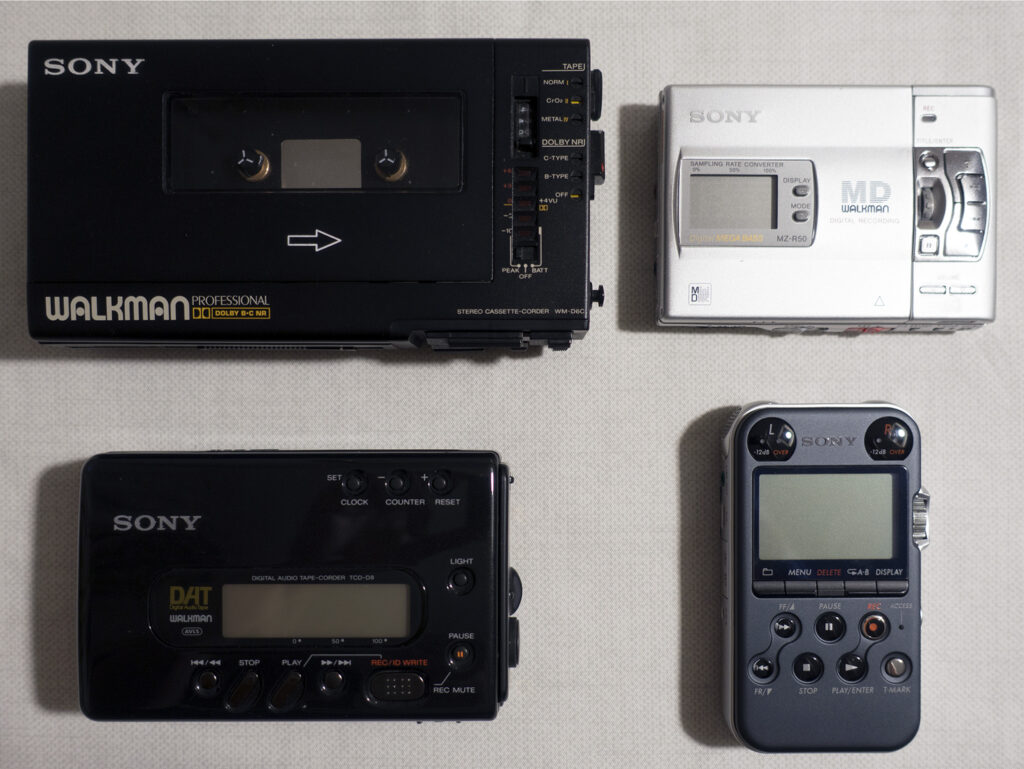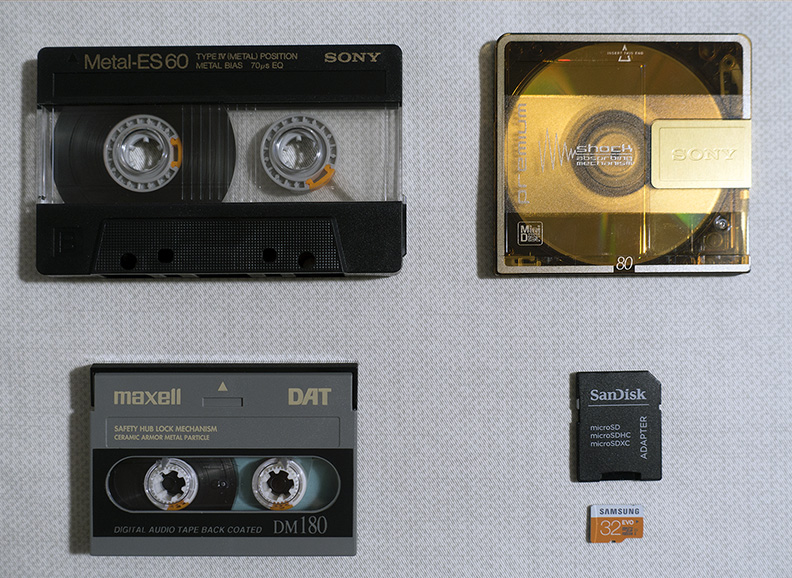My Favorite Portable Field Recordes Over the Years

top left: Analog Cassette recorder WM-D6C – top right: MiniDisc Digital recorder MZ-R50
bottom left: DAT Digital Audio Tape recorder TCD-D3 – bottom right: Digital Audio recorder PCM-M10

Storage media used by the above recorders
During about forty years of recording, I have used various types and models of recorders, from the first bulky analog models, such as Uher 4000 series, to the latest digital recorders equipped with SD or micro SD solid state memory cards. Of the later I own several models of various brands, such as Sony, Tascam, Marantz, Olympus, Zoom, Roland, Fostex… perhaps I forget some brand…ah, the Philips DVT 7500 (what a disaster!). Although I also have large recorders equipped with solid state memory, I have always preferred compactness, sometimes losing a few decibels of signal due to this.
Since I was using cassette decks, my favorite was the Sony WM-D6, quickly replaced with the WM-D6C model (see the photo above), although the Dolby C equipment was of no use for recordings in nature, as well as the Dolby B of the previous model was not.
Later came the era of the Digital Audio Tape, the DAT, of which the first model I bought was the TCD-D3, a really well made item by Sony, then replaced with the TCD-D7 and immediately after with the TCD-D8, visible in the photo, which I still have jealously!
Then came the Minidisc, also for this I bought several models, but my favorite for field recording remained the Sony MZ-R50, also visible in the photo.
Finally, with the advent of solid state recorders that record on memory cards, from Compact Flash Cards to tiny Micro SD Cards, there has been a succession (as well as a collection) of models. Among all, my favorite always remains a Sony model, the PCM-M10, which in everyday use I prefer to the one that at today (January 2021) I believe to be the best of all portable solid state recorders ever built: the Tascam DR100 mk3.
All this by giving up the XLR 48V phantom power connection, in favor of the less resistant, but more compact, Jack 3.5 mm Plug In Power feeding microphone system.

Commenti recenti